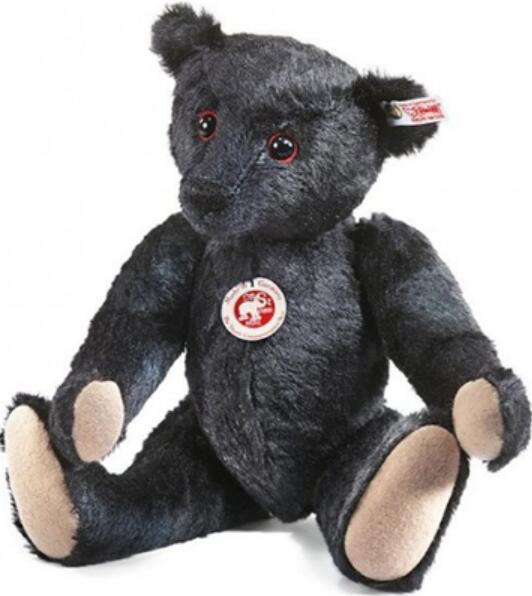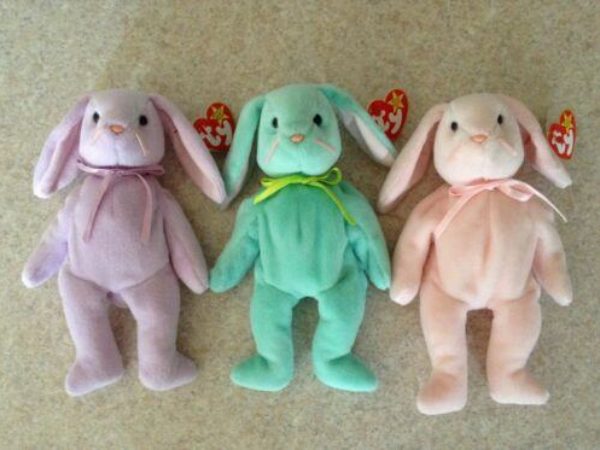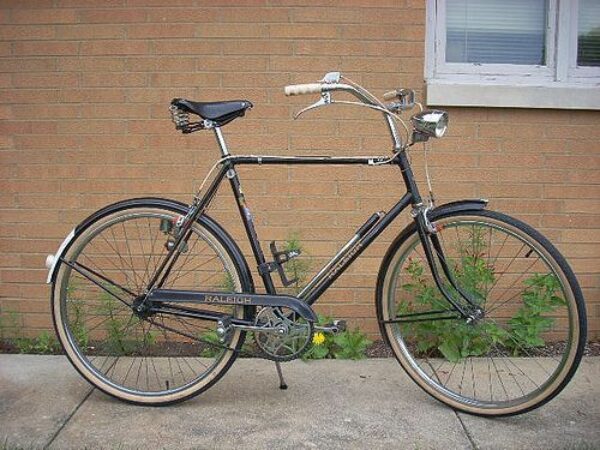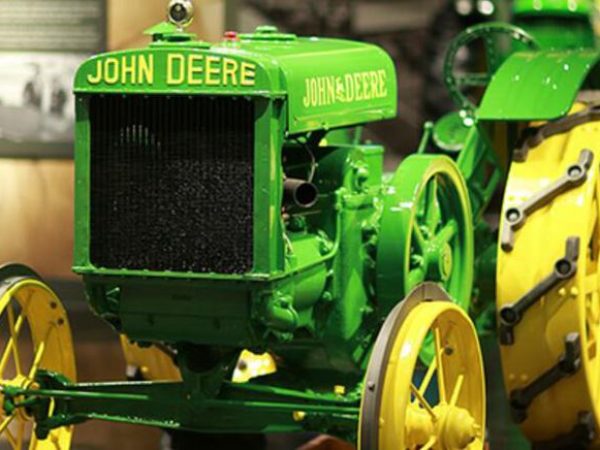There is more to antique teddy bears than the comfort and feeling of companionship they offer. The origin behind their creation makes them not only famous but also valuable.
As a tribute to the victims of the Titanic shipwreck in 1912, Steiff, a German toy company produced bears tagged ‘mourning bears.’ These teddy bears spotted black and red bounded eyes and today they sell for as much as $20,000 in auctions.
This guide aims to help you gain in-depth knowledge on antique teddy bears, how you can identify them and the most valuable antique teddy bears today.
Table of Contents
Antique Teddy Bears (A Brief History)
The story of Antique teddy bears opens in 1902 when Theodore Roosevelt, the president of the United States at that time went down to Mississippi intending to settle the border dispute between Mississippi and Louisiana. Little did he know this journey would mark a new era for toys.
Being a zealous hunter, Roosevelt had gone hunting but did not hit any game. This disappointment led his guides to capture a bear and tie it to a tree before inviting Roosevelt to shoot the bear.
While this act looked innocent to the guides, Roosevelt did not share this impression as he declined, stating that it would be wicked to harm a defenseless animal in that way.
This act would generate nationwide recognition and led the popular cartoonist Clifford Berryman to draw an image of Roosevelt and the bear which he submitted to the Washington post for publication.
Influenced by the drawing, Brooklyn shopkeeper Moris Michtom and his wife Rose Michtom crafted a fabric bear, stuffed it with different materials, and then displayed it at their shop.
They had tagged the stuffed bear the ‘teddy bear’ from Theodore and then displayed it with a copy of the cartoon drawing to honor the president. Much to their surprise, many Americans loved this idea and were interested in purchasing the teddy bear.
The first teddy bear they made had a triangular face, bulky body with long arms and legs. Michtom and his wife got approval from Roosevelt to use his name to sell the teddy bears and benefited greatly from this exchange.
Around this same period, a German toy company named Steiff established in 1880 in Giengen and owned by a seamstress, Margarete Steiff started a bear business. She had a nephew named Richard, who would often design a stuffed bear from his time at the zoo.
He convinced Margarete to add this design to their toy collection and by 1903, Steiff introduced the bear toys at a German toy fair. Many toy companies including the U.S, bought these bears from Steiff making them popular internationally as the teddy bear.
No one has been able to pick just one person to give credit for creating the first teddy bear. However, many agree that the teddy bear franchise’s success is due to work put in by these two companies.
For a visual aid on this history, you can watch the short YouTube video below.
Ways to Identify if an Antique Teddy Bear is Original
When collecting an antique teddy bear, it is very important to learn how to properly identify key features that will serve as proof that the collectible is an authentic antique teddy bear.
Ideally, antique teddy bears come with tags showing their date of production, however, in most cases, these tags get separated from the teddy, making it necessary for you to look for alternative features that prove the teddy bear’s authenticity.
Here are some of the features that can help with the identification.
1. Identify the Maker
One can easily trace antique teddy bears to their makers because there are four major producers of antique teddy bears. So, if you can identify the key characteristics a maker uses in production, you can identify the maker.
Below are the major producers you can trace the antique teddy bears to.
Makers |
Country |
Steiff Manufacturing |
Germany |
Ideal Novelty and Toy Company |
American |
Le Jouet Champenois |
France |
J.K. Farnell company |
Britain |
Steiff Manufacturing
This toy company started operating in 1877 and has since produced some of the most popular antique teddy bears we know today.
Richard Steiff, the nephew of this company’s founder, is the first teddy designer the company had. Drawing inspiration from his experience at the zoo, he began designing life-like adaptations of the bears he had seen.
The company manufactured its first teddy bear in 1904, which sold for only five cents. Today, this same doll is valued for as much as $1,000. These bears had characteristics that would separate them from other companies and some of them are:
- The cinnamon or white colored mohair of the bears
- For every seventh bear the company made, they would include a seam sewn by hand at the center
- A metal stud usually made from iron, brass and sometimes gold is attached to the left ear
- The original tag, if available usually carries the ‘made in Germany’ or ‘Steiff original’ name on it
- Antique bears are made from mohair
- Antique Steiff has an old shoe stud eye
- The earliest bears did not have movable limbs; it was not until 1905 that the limbs became movable

Ideal Novelty and Toy Company
This toy company was operational from 1902 until 1984 and the bears from their collection were referred to as the American bears. The defining characteristics of these bears include:
- A black buttoned eye
- A round thigh with pointed toes
- Long and thin-looking arms
- The first set was without a trademark, but eventually, the trademark was either marked ‘ideal’ or took the shape of a circus wagon
- A height of 19.5”
- A golden-colored mohair
- Triangular heads with black nose
- Curved paws with pads

Le Jouet Champenois
These French teddy bears, like the others, have certain features that make identifying them quite easy. For one, the teddy bears from this company were majorly manufactured by Emilie Thiennot, who had worked in another toy company.
Under the Le Jouet Champenois, Emile began trading his bears and became the first to manufacture stuffed bears in France. These bears featured:
- A colorful body and the lining of their ears
- Buttons on the body of earlier bear models
- Mohair, bristle or cotton plush manufacture material
- Individual and sometimes the simultaneous movement of the arms and legs.
- No tags
Although Emilie got an award for one of his teddy bears in 1920, the company eventually closed in 1993.

J.K. Farnell company
The London company was founded in 1906 and ran until 1996 when it was purchased by another company that makes replicas. They were the first producers of teddy bears and were famous for their top-quality bears.
Below are some of their basic characteristics:
- Long, thin arms that turn at the wrist
- A broader hump at the back than other types of bears
- Big feet
- Bulky legs and thin ankles
- Cotton paw pads
- A stitched nose usually made with a silk material
- The bigger bears have glass eyes while the smaller ones have the custom black buttoned eye
- The Farnell Company made earlier bears without trademark but eventually, a disc with a metal rim was attached to the chest and it read ‘Alpha Made’.
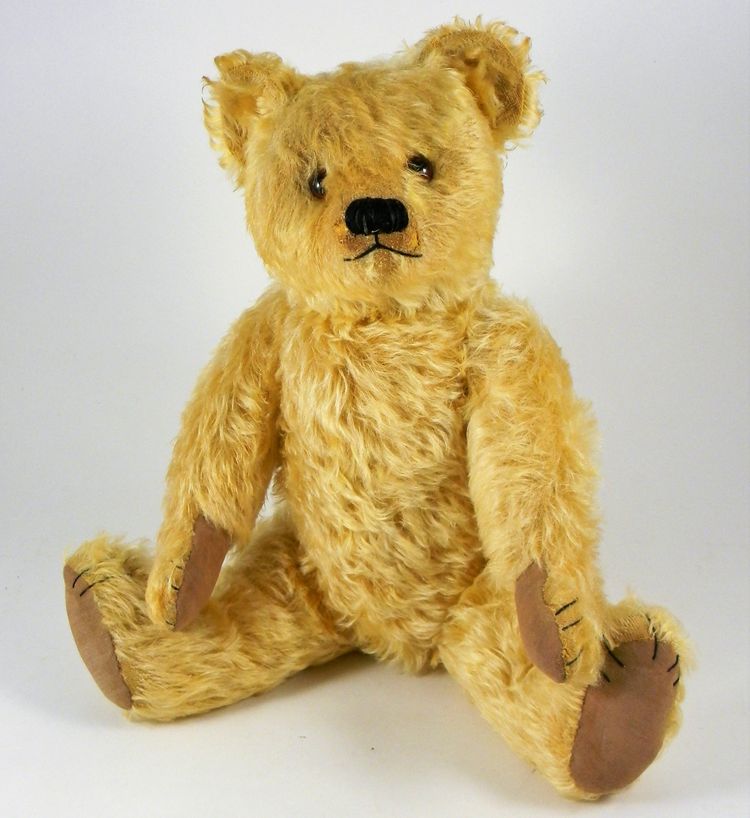
2. Identifying the Material
To determine if an antique is truly authentic, observing and identifying the materials used on the teddy bear will help you conclude. The materials used are in two parts: the covering and the stuffing.
The Outer Covering
For the earliest teddy bears, the major material used to make the body was the mohair woven from a goat’s wool. It was not until the 1950s that other synthetic plush were used to cover the teddy bears.
An expert can tell the difference just by touching the material. However, if you need to verify, you can pull off a little part of the material from the body and burn it. If it turns to ashes, you know it is mohair but if it gives a rubber finishing, it is a synthetic plush.
You should bear in mind that the material used for many antique teddy bears is most definitely from mohair but some fakes can take advantage of this knowledge and use it to form a replica which makes other means of identification necessary.
The Stuffing
The earliest bears are either stuffed using wood wool or kapok. Wood wools are made from wood shavings and would give a crusty feel anytime the bear is squeezed. By 1915, producers shifted to the use of kapok.
Kapok is a silk-like material that makes teddy bears feel firm and gives them more weight than wood wool. It is also very soft to touch and makes the teddy bear easier to squeeze and hug.
These are the major stuffing materials you will find in an antique teddy bear. Remakes and replicas will most likely have plastic foam and some will have waste from the textile factories.
3. Identifying the Appearance
The teddy bear has taken different forms since it was first created. With time, the shape, size and features have changed, making it possible to differentiate an antique teddy bear from more recent productions.
This appearance is best identified by observing the body shape of different bears and their facial features.
Body Shape
Today’s body shape of teddy bears has evolved so much that it may look like a different toy if placed beside an antique. Originally, manufacturers made teddy bears with pointed mouths and noses instead of the rounder shapes we have now.
The arms and legs of the antique bears are usually thin and long. It was not until the 60s that they started having chubby arms and legs. The joints of the bears are usually connected using iron which will sometimes show through the fabric.
It was also common for the early teddy bears to have a hump between their shoulders. The size of the hump would sometimes vary by manufacturers and it was not until the 1930s that teddy bears were produced without the hump.
A professional will be able to look at the shape of a bear and determine if it is an antique or not but not everyone has the experience to verify authenticity like this which is why it is necessary to look at other features.
Facial Features
The defining features of a teddy’s face will help you identify an antique. You must pay attention to the eyes and the nose because these are the most distinctive parts of the face that you can observe.
Originally, the eyes were made as buttoned eyes and sometimes were wooden or would be covered with leather. Companies replaced this appearance with the inclusion of colored glass eyes during WW1.
The nose was initially hand-stitched with a brown or black thread. Different manufacturers have their designs, but it has the same feature. Sometimes, leather would be used while they used the thread to sew around it.
It was in 1945 that manufacturers looked to molded plastic to give the teddy a shinier appearance.
4. Reference Books
For more knowledge on how you can identify antique teddy bears, you can always do more research and read reference materials from people who have studied this history. Some books you can consider are:
- Bears – Sue Pearson
- The Teddy Bear Encyclopedia – Pauline Cockrill
- Collecting Teddy Bears – Sally Taylor
Factors that Determine the Value of an Antique Teddy Bear?
To determine the true value of an antique teddy bear, you should know that certain factors have to be considered before you can reach an acceptable value.
Some of these includes:
The Condition
In order to successfully determine the value of an antique teddy bear, it is necessary to critically assess the condition of the bear currently. A damaged antique bear will not fetch as much price as one preserved and in a good state.
It is also advisable to check for any repairs a seller may have done to the bear. Replacing parts of an antique teddy bear can affect the price negatively, making it fetch a lesser price than you want.
The Manufacturers
There are many manufacturers of antique teddy bears, with some being more significant than others.
Due to its popularity and status, a company like Steiff with history and ties to the origin of the teddy bear will have its bears valued at a much higher price than a company that makes replicas of the company’s design.
Other companies like the Ideal Toy Company and the Farnell Company are also major manufacturers that will have a higher value for their antique teddy bears.
Special Features
There are some special characteristics an antique teddy will possess that will make the value higher than expected. For instance, if the teddy is a limited edition or a prototype, the price will likely be higher than others.
Another feature that can affect the value is the original tag. Manufacturers made many early Teddy bears without tags, but eventually, some manufacturers began adding tags to the bears. A teddy bear with the original tag will be rare and have a higher value.
The History
Some teddy bears are produced due to incidents that happened a while ago. Teddy bears with an origin tend to be valued higher than regular ones.
An example is the first teddy bear from America that Michtom created because of former president Theodore Roosevelt’s encounter with a tied bear. Another example is the Steiff ‘mourning bears’ created to honor the victims of the titanic shipwreck.
Suppose you are looking to purchase an authentic antique teddy bear. In that case, these are some factors you should consider before you reach a final price.
For clarity, you can always do an appraisal for the bears with a professional like Dr. Lori or check specialized websites like eBay for an idea of the value before you make that purchase.
3 Most valuable Antique Teddy Bears
Below is a list of five antique teddy bears that are incredibly valuable in today’s antique market. These teddy bears draw their value from their origin and the time they have on them and have been verified from credible sources.
Teddy Bear |
Release Date |
Year Sold |
Price |
Colonel Bob Henderson and Steiff Teddy Bear |
1905 |
1994 |
$171,600 |
Steiff Titanic Mourning Bear |
1912 |
2000 |
$133,285 |
Steiff Rod Teddy Bear |
1904 |
2000 |
$105,000 |
3. Steiff Rod Teddy Bear
Price: $105,000
Year: 2000
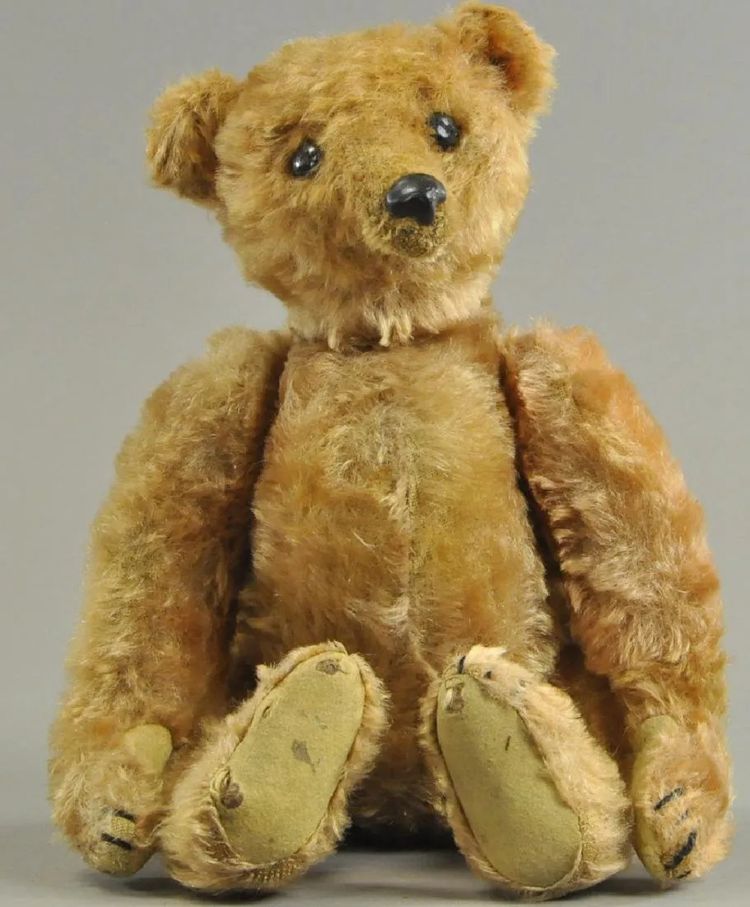
This bear is one of the oldest Steiff teddy bears. Some have even said it is currently the oldest known kind of teddy bear currently available in the world today.
This brown furry toy is bound by an iron rod and because of its age, it is one of the most valuable teddy bears you will come across.
In the year 2000, at an auction in its country of origin which is in Germany, this teddy bear sold for $105,000
2. Steiff Titanic Mourning Bear
Price: $133,285
Year: 1912

After the tragic Titanic incident in 1912, many were left to mourn their loved ones, which influenced the Steiff toy company to produce ‘mourning bears’ to honor the victims of this tragic accident.
These bears had a fluffy black body with long arms and legs and a signature red-ringed eye to give the impression that the bears had been crying. It is no surprise that these bears will be as valuable as they are now because of this tragic origin.
The original owner of this teddy bear had left it in storage for many years, so it was still in good condition when it was auctioned and sold for $133,285 in 2000.
1. Colonel Bob Henderson and Steiff Teddy Bear
Price: $171,600
Year: 1905
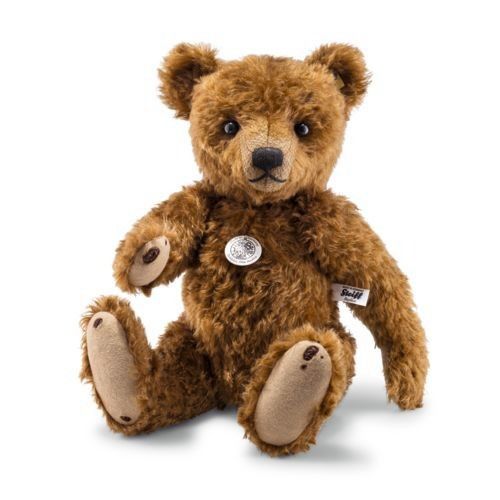
In 1905, this brown girl teddy bear was produced and gifted to Bob Henderson. Saying this teddy bear was just a furry friend would be putting it lightly because this bear was very dear to Henderson when he was alive.
He was very fond of this teddy bear, and in all of his achievements which included becoming a colonel in the British army and fighting in World War II, this girl bear was right beside Henderson at all times.
The girl teddy bear was by his side until he died in 1990. Only four years after his death, this teddy bear was auctioned and sold for a record-breaking sum of $171,600 to a Japanese businessman Yoshihiro Sekiguchi.
Final Thoughts
Antique teddy bears remain one of the most valuable types of toys. You should note that some may try to sell a fake to you as an antique, so it is advisable you learn these handy tips that can help you avoid mistaking a replica for an original;
- Look out for deliberate stains on the bears by scammers trying to make you believe the teddy is truly an antique
- Research the different manufacturer’s labels so it can help you identify what type of teddy you have
- Confirm that the material of the bear is mohair and not the synthetic wool.
